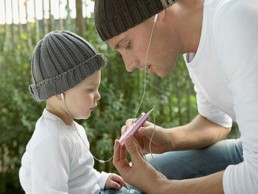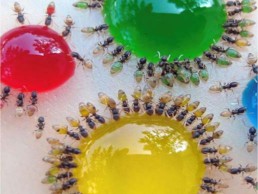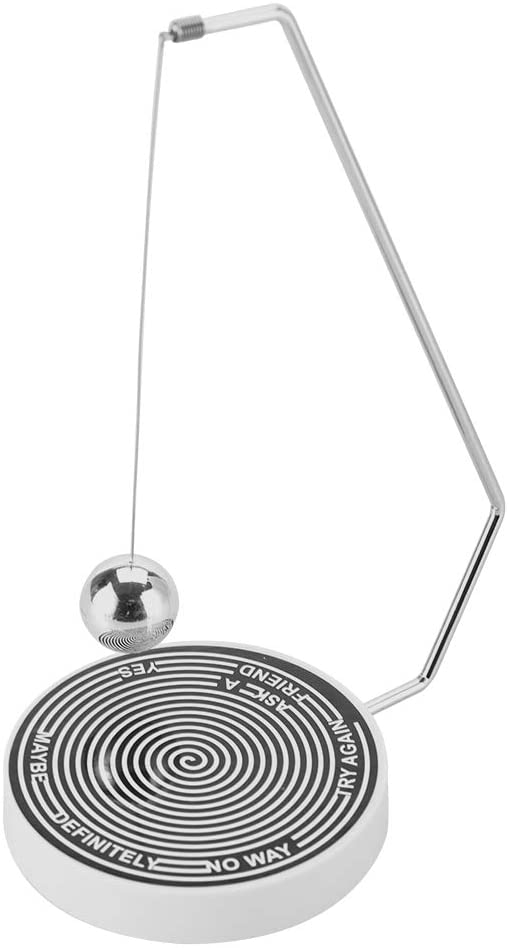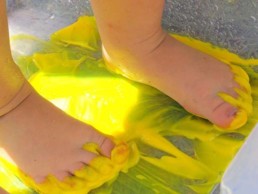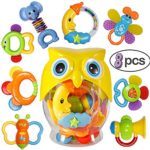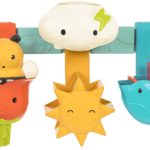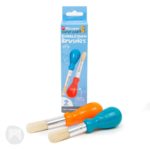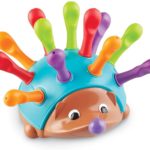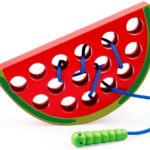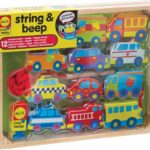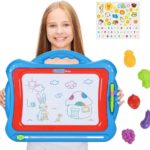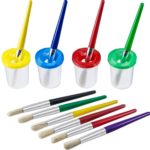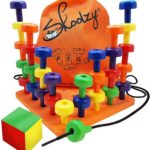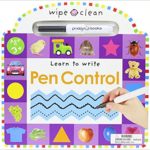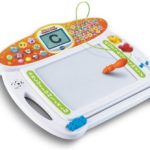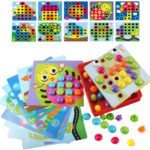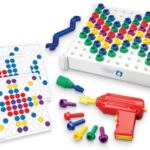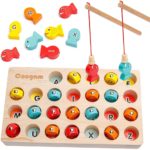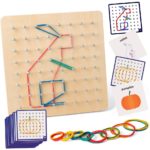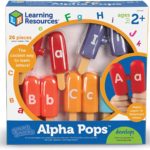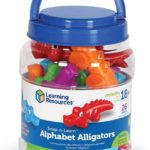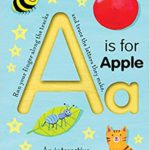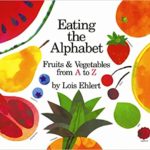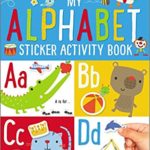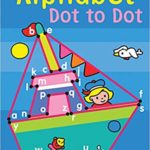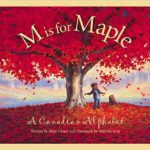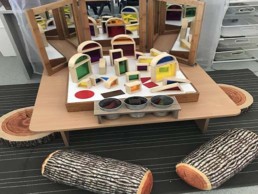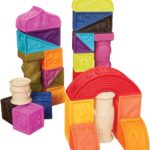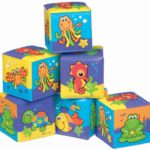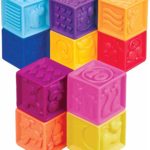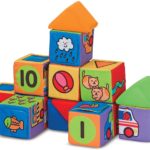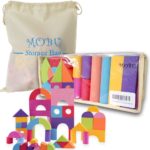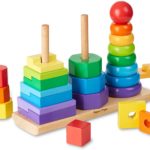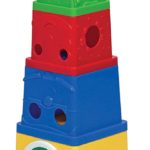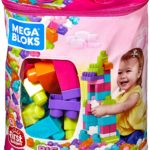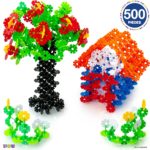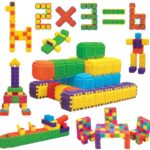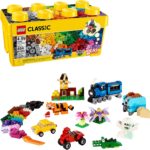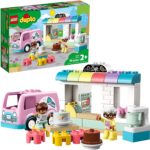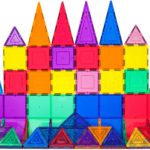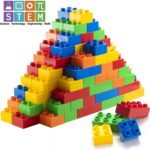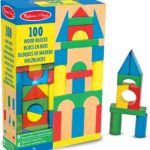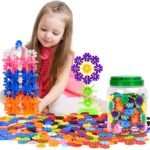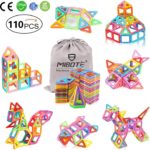5 steps to keeping the romance alive after baby is born
It took nine months of careful planning and preparation for you to meet your baby and just one second to fall in love. Having a child is undeniably one of the greatest joy’s life brings, and many couples feel a much stronger bond with each-other, but it’s also an adjustment.
For couples it means learning to parent, share their home and even their bedroom in the first few months of parenthood. There are more books to read, laundry and chores to do, and there is much less time. Babies need constant attention. Nights are busy with multiple feedings and mornings start early, incredibly early. So how do couples adjust to these new demands and still find time to nurture their own bond – sans baby? Below are five simple steps you and your spouse can take to keep the romance alive, after you have a child.
1. Make A Date and Stick to It
Chances are your schedules were busy before baby was born. Now you’re taking turns working, napping, cleaning, feeding and caring for your little one. This means time spent as a couple is sacrificed. By setting a date to spend some quality time with your partner, you’re instilling a habit, which will have great benefits for both you, your partner and your child. This may start as a simple coffee date down the street on Saturdays in between feedings when your babysitter or relative can stop by. Eventually when you’re able to leave your child for a couple hours, your date can evolve into dinner or a movie. If you can’t leave your children, plan for a special dinner at home once a week after baby goes to bed. Set a beautiful table and take turns cooking for each other or cook together. The idea is to make alone time with your partner a regular occurrence, one that is prioritized and doesn’t get bumped aside.
2. Take A Romantic Stroll During Your Child’s Nap
Turn your child’s nap time into a romantic walk for you and your partner. The fresh air is good for your child while they are sleeping in the stroller, and you and your partner can enjoy a scenic stroll while having an opportunity to talk. Children sleep much better outdoors, and this can buy you up to two hours with your partner. Make sure the setting is natural, so your child is not disturbed by high traffic noises or the lights and sounds of a busy mall.
3. Show Your Affection, “Just Because”
Remember when you used to call each other just to say, “Hi”? That doesn’t need to stop. Nor do the love notes, text messages or showing your love, just because. Experiment with doing something loving for your partner once a week. This could be leaving a love note on the bathroom mirror or hiding a favourite treat in your spouse’s coat pocket. These acts of love and kindness don’t take a lot of effort or time, but they do show your partner you love them, and you care.
4. Give Your Partner the Day Off
Okay, so a whole day may be out of the question, but surely you can give your partner an afternoon to spend time alone, with their friends or even just to have a nap, while you take care of baby. If your partner is home and you can tell they are run down, offer to run them a warm bubble bath and surprise them with champagne and strawberries or a new book. These acts of service show your partner that you consider their time and needs important. More likely than not, they will return the favour.
5. Take Five Minutes to Connect Each Day
It’s easy to lose track of what’s going on in your partner’s world outside of the home, when your child is born. Conversations and attention tend to revolve around your children and not your spouse. Take at least five minutes each day to ask your spouse about their day and have them ask about yours. Make a habit of doing this at a time when you can give each other your undivided attention. Really listen without judgment when your partner is talking and try to put yourself in their shoes. You’ll be surprised at how a little empathy can go along way in keeping you both connected.
Time is precious when you become a parent. Your personal life suddenly seems non-existent and often you’re too tired to think of planning anything beyond your child’s next feeding. However, making a habit of connecting with your partner on a regular basis can actually lessen the load and make the journey of being a parent much more enjoyable. Not only that, but your child grows up with parents who are affectionate with each other, happy to be together and very much in love. This ensures that they have a good foundation and a model to build their own relationships in the future.
Free audible books for your child
Hi all!
I have always read a lot of books, since I was little. I love reading, and so do my children. I even wrote a few articles about the benefits of reading, like this one.
A few years ago, I discovered Audible, and I have been hooked ever since! When I drive, I always listen to a book in my car, and when I go on runs on my own, I do the same. I also read printed books, but Audible is for when I am moving.
Today, my friend Julie posted this message, which I thought I would pass on to you:
“As long as schools are closed, kids everywhere can instantly stream an incredible collection of stories, including titles across six different languages, that will help them continue dreaming, learning, and just being kids.
All stories are free to stream on your desktop, laptop, phone or tablet using this link.”
I am really excited for you all. My boys are a bit too old for children’s books, but your children might still be interested. Enjoy!
xo Natacha
Earth Day Gratitude Hike
Happy Earth Day! Today, instead of making anything, I thought the best way to honour mother earth is to just be with mother earth. Be present, have nothing else to do other than spend time in nature, feeling grateful for all the natural abundance around us. This will teach your child to love nature, to see all of its gifts, and to feel grateful for them. It is also an opportunity to spend quality time as a family.
Best Ages for This Activity
Even if your child is a newborn, bundle up and go for a walk or a hike together, just spend time breathing the fresh air and being one with nature. I remember when I was pregnant, one day the sun was shining so I went outside and lifted my t-shirt up so my belly could feel the warm rays of the sun and said “See baby? That’s the sun shining!” It’s never too early to love nature!
What You Will Need
- Comfortable shoes that can get dirty (for you and your child)
- Comfortable clothes that can get dirty
- A small bag or back-pack to collect treasures from nature
- A magnifying glass if you have one, to look at things up-close
- A camera your child can use to take photos
- A picnic if you wish, or even just a snack
- A blanket if you want to sit somewhere in the sun as a family and look at the sky, or have a nap
- Disinfecting wipes to clean your hands if you need
Where to Go and What to Do
- Invite your child (and family) to go on a hike in honour of the earth, since today is Earth Day
- Choose an easy hike, or a walk near your home where you can see trees, nature, and hopefully not much else.
- During your hike, or walk, chat with your child. Children always notice things around them, and love to stop and observe. They will be delighted that today you, too, have time to stop with them, and notice the world around them.
- When you see something that moves you (for example, a breeze caressing your face, a flower, or a butterfly), simply say “Thank you earth for this treasure” or whatever you feel comfortable saying, but express gratitude for it. Then notice something else and express your gratitude for that, too. You can say to your child “I feel so grateful that the sun is shining and warming my skin, it feels so nice! Thank you, earth!” You child will soon find something to be grateful for and follow suit. If not, ask them: “What are you grateful for from the earth?”
- Notice things on your walk, even take some treasures home, like fallen leaves, beautiful rocks, or pine cones – whatever your child likes; but:
- Today at least, do not take anything that is alive (don’t pick flowers, don’t take live insects) – honour nature. If you want, take pictures of those things
- Help your child take photos of what they like most (for some, it can be the view, for others, it may be a tree seen from below, an ant hill, or the clouds) – make sure taking pictures does not become the main activity during your walk – the main activity is to be with nature, be present, together.
- As you walk, you don’t have to be chatting all the time, only if you feel like it. Be happy just walking in nature.
- Stop somewhere nice and put your blanket down, have some lunch and a rest, keep talking about nature and ask your child lots of questions, about what they like about going on walks, or what smells in nature are their favourite, or what they saw, etc. Share what you love most, or share what you used to love as a child (I used to love eating raspberries right from the raspberry bush near my house)
- Talk to your child about what things you could do as a family to take care of the earth (it can be planting a tree, recycling, using the car less, etc.)
- Make your way back home. You don’t have to spend all day, 30 minutes if that’s all you have.
Learning Opportunities
This walk seems simple, but it teaches your child plenty! It teaches them to respect nature, it teaches them to love it, and to want to spend time in nature, which in itself has a multitude of health benefits. It also teaches them to be in the moment, an essential social and emotional skill. When you respect nature and take care of it, it teaches them the habit of contribution. When you find ways to take care of the earth (like learning not to litter, or to recycle), it teaches also your child the habit of contribution, respect, and citizenship. The walk in nature itself, and being present during it, teaches your child mindfulness. Plus, you will get some exercise, good for your child’s physical development.
Extended Learning Opportunities
- Once you get home, you can take a shoebox or any other container and put the “treasures” from nature, which your child can revisit again and again.
- You can make a book of nature with your child: use a beautiful but inexpensive notebook with blank like this one. There, help your child write the title (or write it for them if they are too young). Draw a photo and write their names as authors of the book (ex: Nature by John Smith). Inside, you can paste the photos you took on your walk or use masking tape to tape some of the treasures you found, like leaves, or seeds, or anything that you like. You can also have your child’s drawings of the things from the earth that they feel grateful for, and if they invite you to, you can draw or write the things you liked from the walk. You can print the photos you took on your walk and add them to the book. You can also help your child write the things they loved most about your walk, or draw a map showing how to get there (great for math). Once the book is done, display it proudly in your child’s library. Congratulations, your child just wrote a book! Watch as your child picks up their book time and again and relives all the learning experiences and bonding moments you had that day. They can also add to the book on your next walk, or as they learn new things about the earth. According to the Reggio Emilia early learning philosophy, documentation is an essential step in your child’s learning, and by helping your child document what they learned in this book, you did exactly that.
- Sing a song about Earth Day – I really like this one
- Learn more about Earth Day and what you can do to get involved on National Geographic
- Color the earth! Here’s one of our CEFA Early Learning schools coloring pages you can download for free.
Books You Might Like
Click the images below to see where you can buy these products
Books for 2 to 5-year old’s
How to Make Ants Change Colour
Ants typically eat nectar, seeds, fungus, or insects. In this experiment you will be feeding the ants sugar. This amazing experiment can show your children how ants eat and drink, which teaches them about nature and the insects around them. Plus, it is such a fun thing to do, and a calming activity, as many nature activities seem to be. This experiment can ask two questions:
- Can ants turn the colour of the drink they drink?
- Is there a colour they prefer over another?
This is a great activity to do outside. Just make sure that you choose a white surface (a paper plate is fine) so your children can clearly see what happens. Learn more about ants before you try this experiment.
Best Ages for This Activity
This activity is great for two to five-year-old children (or older).
What You Will Need
- Food colouring
- Water
- Sugar
- Ants
- Cups
Optional Supplies
- A magnifying glass
- Pipettes (eye droppers)
Let’s Get Started
- In a cup, mix 5 ¼ cup of sugar with ½ cup water
- Pour a teaspoon of the mixture into a cup and add food colouring (make it very bright)
- For every colour you want to try, use a different cup and follow the same procedures. I would suggest 4 colours
- Bring a white paper plate outside and place it upside-down (so it is easier for the ants to climb) near an anthill or wherever you see that there are ants
- Using the pipette, carefully put a large drop of each colour on the plate, separated (see example in photo below)
- If you wish, add a large drop of milk as well, without food colouring or with – your preference
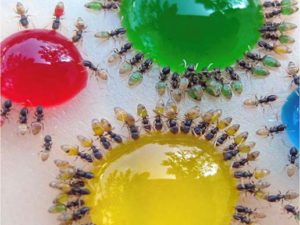
You are now ready! Stand close to the plate with your magnifying glass and wait for the ants to find your experiment. Remember to watch that other animals or your pets don’t lick your experiment off the plate. You can stay and observe or come back in 10-15 minute intervals to see the progress – the ants will turn the colour of the liquid they are ingesting. Your children can draw, take notes or take photos of the process throughout.
Learning Opportunities
Children will learn S.T.E.M., especially natural science while documenting the scientific process, and be in nature to observe it. Ask your child questions like; Where do the ants live? How strong are they? Where do they store their food? Do they eat a lot? A little? Your child can practice their drawing skills (art) and writing skills during documentation. Children will also have the opportunity to learn patience, an essential social and self-regulatory skill.
Things to Keep in Mind
Please keep in mind that young children need adult supervision at all times, especially outside. Also, use the magnifying glass carefully. If you aim it at the ants directly under the sunlight, you will burn them, which is cruel.
Are you finding it harder not to YELL at your children during COVID-19?
According to a study from the University of Michigan just released, parents in the US are finding that the stress of the pandemic is taking a toll on their parenting as well.
One in five parents report having spanked or slapped their child at least once, and two in five parents reported shouting, yelling and screaming at their children a few times or more, all in just the past two weeks.
According to researchers, parents are feeling the stress of social isolation and financial difficulties during the COVID-19 pandemic, and children are feeling the psychological and physical brunt of it.
Parents are trying to meet their children’s needs and home-school, often for the first time, while still having, in many cases, full-time work (from home), financial concerns, and loneliness, which is understandably affecting their parenting.
The problem is that our children need us now more than ever, and are also feeling stressed, uncertain and sad. This is the time to be strong and show up for our children, despite our own needs. We are here for you, and are ready to listen and help give you strategies to deal with this unprecedented situation, and leave yours and your child’s dignity and health intact. For starters, here is an article I wrote for you that might help.
Keep strong,
xo Natacha
How to keep calm with your children at home during COVID-19
These are unprecedented times for you and your children, and we are all trying to figure out how to cope and adjust to our “new normal” while still juggling our responsibilities on a day-to-day, often minute-to-minute basis.
How To Parent Through Stressful Times
While in isolation, you are sharing about 8 hours per day more with your child and your partner than usual. You may all be crowded in a small space, taking phone calls at the same time, sharing a computer, or the dining room table. There is not enough time to do all the things we need to do, and as far as your children are concerned, there are not enough hours in the day to be with you.
Parenting while both you and your child are stressed is, you will be relieved to know, the same as parenting during non-stressful times. Here are a few key rules:
- Model good behaviour
- Set developmentally appropriate expectations for your child (for example, older children may be asked to make their own breakfast while you work, or younger children can use their inside voice if they play next to you)
- Notice when your children do something good, 5 times more than when they do something bad
- Stay calm (and use your inside voice at all times – avoid being loud)
- Follow a routine (same time to get up, same time to eat, same time for bath and bed, keeping everything routine as children crave routine, especially when stressed)
- Focus on the positive things they do and take time to be with them completely. The more time you spend with them, the less they will “act out” to get your attention.
During COVID-19, your children might act out more than usual. In addition to that, if you are working, is the fact that they see you all day, but they can’t have your attention, so they may try all the strategies they know to get it. Young children especially don’t fully understand why you are there physically, but not with them. Instead of making your interactions negative, offer kindness and encouragement, and keep rewarding good behaviour when it occurs. Reassure them that even though you as a family (and the rest of the world) are going through a stressful time, everything is going to be ok, and you are together in this. Read my article on how to deal with your child’s anxiety.
We all experience some form of stress during our lives, but these last few weeks, the level of stress, albeit temporary, is more serious, and more damaging. For both you and your child, what will make it more manageable, is staying close and feeling supported by one-another. It is those connections to the meaningful people in our lives that will reduce this stress and help us cope, but in isolation, this is easier said than done!
Here are 7 strategies for parents (and children) to reduce stress and anxiety:
Sleep, Exercise and Eat Healthy
You probably already know this, but since many of our usual routines have been interrupted, you may not have resumed your healthy habits in the past few weeks. Find a way to exercise at home. It does not have to be your usual gym routine, it can be some push ups, abs and lunges in your living room, and a walk or run around the block. This will take care of some of the stress you feel. For your children, I recommend the same. They can ride their bikes around the neighbourhood or go for a walk with you. Invite them to play in the backyard if you have one, maybe jump on a trampoline, play tag, or anything that gets them moving.
Eating plenty of fruits and veggies has been more challenging than usual while in isolation, but if you can, have salads or steamed veggies and healthy protein with your meals. It is more difficult than usual for some people to sleep while stressing over finances and children. If this is your case, try having a nap in the afternoon to catch up on sleep and feel refreshed for the rest of the day.
Take 5 Minutes to Truly Connect with Each Person in Your Household
- Ask your partner how their day was. Eat lunch together, even if lunch is 10 minutes. Listen to one-another. This will greatly relieve stress.
- Hold your child and ask them what they are thinking about, and just listen to them. Share a story from your day, give each-other a long hug, no matter what age your child is, or a back scratch. Give your child the opportunity to make you feel better also, as it is teaching them empathy, and it is making them feel valued and important.
- Do this for each person every day, and watch the stress dissipate little by little.
Give More of You
Research shows that when we feel stressed, the more we give, the better (and less stressed) we feel. Take the time to do little things that will help your partner feel closer to you, and appreciated, despite both of you feeling frazzled all day long. Make them a tea in the middle of the day and bring it to their desk while they are busy working; Give them a “happy day” where they don’t have to worry about cleaning the house, making dinner, or doing anything both of you normally do – just let them have a nap after work, read a good book, or watch a show without feeling any guilt. The chores will still be there the next day, but you both will feel closer; Leave them a post-it note that reads “I’m glad we’re in this together”; find ways to show them that you appreciate them. Do the same with your children. This will relieve your own stress and show your family that they matter to you.
Ask For A Few Minutes When You Need Them
If you feel that you are about to “lose it”, that you’ve just had enough, and you’re about to yell at the next person that asks for something, take a deep breath, and tell you child (or your partner) that you need a few minutes to yourself to regulate your emotions. Take a few minutes away from everyone to regain your cool, and when you feel like yourself again, you can go back and handle whatever it is that you needed to do. There is no shame in showing that you too need some time to cool off. In fact, you are modeling this for your children and showing them what they can do when they feel they are just about to have a breakdown.
Be Mindful
Make some time for mindfulness, meditation, yoga, or deep breathing. Make it the way you start the day or end the day, or do some yoga poses as a family. Take a few deep breaths when you begin to feel overwhelmed by stress.
If Possible, Lessen Your Hours of Work
If your children are young and still need you, and you cannot get all your work done, it is easy to begin resenting them for getting in the way of your responsibilities. It is difficult, however, to be a full-time parent of young children and work full-time. Your employer might be happy to give you 5 or 6 hour days while your children are home, instead of your full shift. That way, you don’t feel absolutely drained each and every day, trying to fit it all neatly as it did before the pandemic.
If You’ve Done Everything You Can, Don’t Worry!
If you are no longer able to work due to the pandemic, you are facing a different type of stress. This is when I recommend you use one of my favourite sayings: “If you can do something about your situation, then just do it and don’t worry about it. If you can’t do anything about it, then there’s nothing you can do, so don’t worry about it!” I apply this all the time! If you are being laid off or have lost your job or even your company, and you have no options for work, then there is no point in stressing over it until this is over. Instead, work on updating your resume, starting a new project you have been putting off, playing with your children, organizing your house, or anything else you have been wanting to do but never seemed to find the time. Keeping your mind busy with other things will ease the stress (not to minimize your situation, of course, it is terribly stressful to be in this position and not have any idea what the future holds). This might be an amazing opportunity to build an even stronger bond with your children, which will last much longer than this temporary situation. Make the most of this stressful time your family is going through.
When you feel stressed, you often pass on that stress to your child, whether directly (by yelling at them, for example) or indirectly (they can sense that you are stressed, and worry about you and about themselves. It is important that we minimize our stress and help them also minimize theirs. Prolonged stress can have very damaging consequences in your child’s development. Depending on how old your child is, you can share these tips with them too, as they work for children and adults alike! Even your one year old can take some deep breaths with you or give a long warm hug.
Pendulum Painting
Painting is such great fun for children, and an essential activity for the early years. This activity is a great combination of S.T.E.M. and art, as the paint follows the movement of the pendulum. For more learning, have your children figure out how to build the pendulum before painting (this is not necessary, just extra). This is a popular art project you can set it up and play with for a week or even longer! Guaranteed hours of fascination for your little learners, from ages one to 100! If it is a nice day out, this is a perfect outdoor activity. Plus, it’s very inexpensive and simple.
Best Ages for This Activity
This activity is great for one to five-year-old children (or older).
How to Make It
Supplies
- Washable paint – you can use one colour, or you can do several colours, one at a time.
- A Large sheet of paper
- A container to put the paint in (one per colour). It can be anything from a paper cup with a hole at the bottom, to an empty glue container or pop bottle hung upside down. Here are some examples:

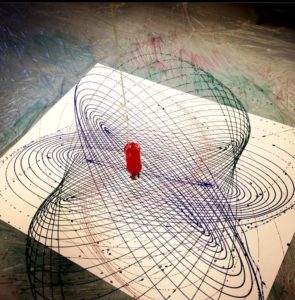

- String or even yarn – anything you find around the house!
- A “tripod” to hold your bottle. You can use two chairs, or a tall open ladder paired with a broomstick. This is the S.T.E.M. part of the experiment – invite your child to try building the tripod.
Let’s Play!
- You are now ready to paint!
- Build your tripod (see pictures below for examples) – the taller your tripod is, the better the designs you will get.
- Attach the string to your container, making sure the hole where the paint will drip out of is at the bottom (see pictures below for examples)
- Attach the container to your tripod (see pictures below for examples)
- Add paint to your container
- Place the sheet of paper on the floor, either outside or inside, under your tripod
- If you want to change colours, all you do is replace the container. If you use an empty glue bottle, you can always seal it back up after you finish
- Your child will know what to do next!
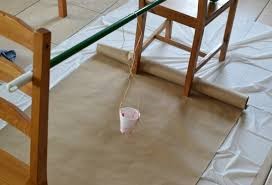
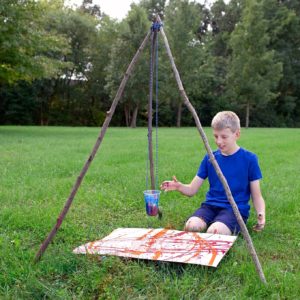
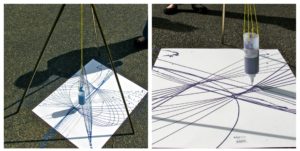
Learning Opportunities
Children will learn S.T.E.M., especially engineering while building the tripod, and seeing how the movement of their bottle translates into perfect figures on the paper. They will also express themselves artistically, and have a beautiful art piece to keep at the end of the fun process. They will also use their fine and gross motor skills, which contribute to writing, and enjoy a highly sensorial activity.
Extended Learning Opportunities
If you don’t have the space, or if you want to do this activity again in a smaller scale, try making it smaller on top of a table:
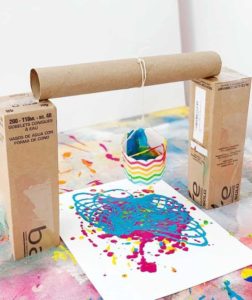
Things to Keep in Mind
Please keep in mind that young children need adult supervision at all times. Paint can be slippery and very messy – if you don’t want colourful footprints all over your house or yard, stay close!
Toys You Might Like
For 3 to 5-year old’s
Painting with Our Feet
Painting is such great fun for children, and an essential activity for the early years. This activity is simple and very inexpensive to do. All you need is a large piece of paper, two feet and a bit of paint.
If it is a nice day out, this is a perfect outdoor activity as well!
Best Ages for This Activity
This activity is great for babies all the way up to 5-year old’s (or older).
How to Make It
Supplies
- Washable paint – you can use one colour but if you want to incorporate science (colour mixing), add at least one more colour.
- A Large sheet of paper
- Paper plates or other washable container to put some paint in, large enough for your child’s feet to fit in.
Let’s Play!
- You are now ready to paint!
- Place the sheet of paper on the floor, either outside or inside
- Put some paint on the paper plates
- Help your child put on a bathing suit, or stay in a diaper – anything that has their legs and feet free and that is washable
- Your child will know what to do next! J
Learning Opportunities
Children will learn S.T.E.M., especially science while seeing what colours they can obtain from mixing two or more colours. They will express themselves artistically, and have a beautiful art piece to keep at the end of the fun process. They will also use their fine and gross motor skills, which contribute to writing, and enjoy a highly sensorial activity.
Things to Keep in Mind
Please keep in mind that young children need adult supervision at all times. Paint can be slippery!
Books You Might Like
Books for babies to 2-year old’s
Books for 3 to 5-year old’s
Surprise Alphabet
All you need for this activity is a white crayon and some watercolours. It is an activity that is almost magical for children. If your children are too little to read letters, you can do the same game with shapes, or animals, or anything you like!
Best Ages for This Activity
This activity is great for two to five-year old’s, or until your child easily recognizes the letters of the alphabet.
How to Make It
Supplies
- Any white sheet of paper
- A white crayon
- Water colours (you can use just one colour, but I find many colours is better)
- A paintbrush
- A cup with water (to rinse the paintbrush)
Let’s Get Started!
- Write the letters of the alphabet on a white sheet of paper, with a white crayon. Don’t write the letters in order so it is more fun for your child – more surprising. Because your child is just learning the letters, make sure that you write them as closely as possible to this font:

- Set up water colours, the paintbrush and a cup with water, and invite your child to discover this “magic paper”.
Let’s Play!
- You are now ready to play! Your child can paint over one little area at a time, until a whole letter is revealed. With surprise and delight, you can guess together what letter it is, until you find all 26 letters! If your child is younger, you can do it with less letters, or with shapes, or anything else you would like to draw!
Learning Opportunities
Children will gain reading skills by recognizing the letters, and writing by practicing hand-eye coordination and fine motor skills.
Extended Learning Opportunities
If your child already knows how to read, print messages for them. You can also spell words or see if they can write you a message without looking at it until it is painted over – tricky thing to do!
Toys and Educational Material You Might Like
Click on the images below to see where you can purchase these products.
For 0 to 1½-year-old children
For 1 to 3-year-old children
For 2 to 5-year-old children
For 3 to 5-year-old children
Books You Might Like
For 0 to 5-year-old children
For 1 to 5-year-old children
For 2 to 5-year-old children
For 3 to 5-year-old children
Playing with Blocks and Mirrors
Blocks are a staple in every child’s playroom, as they are in our CEFA Early Learning schools. There are so many things we can build with blocks, and so much imaginative play! Let me suggest one way that will turn your child’s view of their creations, well, upside down :)
This is a simple activity that your child can play alone, or with siblings, while you work nearby. Here is what is needed (which you probably already have):
Best Ages for This Activity
This activity is great for babies all the way up to 5-year old’s – the blocks they play with just get smaller and more complex!
How to Make It
Supplies
- A non-breakable mirror that you can place on the floor (best) or on a table. Larger is better, so they can sit on it if they want, and build larger structures. If you do not have a non-breakable mirror, I suggest you try using the mirror vertically instead (as in the photo), and secure it to a table or wall, so your child does not accidentally break it and hurt themselves with the glass.
- Blocks of any kind, or other small toys you have around the house. The point is to build a structure on top of the mirror. At the bottom of this document, I have included a few suggestions for blocks for all ages
Let’s Play!
- You are now ready to play!
- Place the mirror on the floor and leave baskets of blocks nearby so your child can be attracted to work in that area.
- You can have several kinds of blocks, and more than one mirror, placed in different positions
- You can start playing with your child, or simply leave them to use their imagination.
- Add cars, or anything else after a while, so they keep building!
Learning Opportunities
Children will learn S.T.E.M., especially engineering while figuring out what to build and how.
Extended Learning Opportunities
Once your child finishes playing with the blocks on the mirror (which can take 30 minutes or several days), use the mirror with play-dough and see what they can build!
Another day, get some glass markers and let them draw on the mirror!
Things to Keep in Mind
Please keep in mind that young children need adult supervision at all times. Also, use age-appropriate blocks as they can be a choking hazard. I’ve linked to some choices for babies and young children below.
Toys and Educational Material You Might Like
Click the images below to see where you can purchase these products.
Blocks for babies to 1-year old’s:
Blocks for 1½ to 2-year old’s
Blocks for 2½ to 3½ year old’s
Blocks for 4-5-year old’s
Books You Might Like
Books for babies to 1-year old’s

